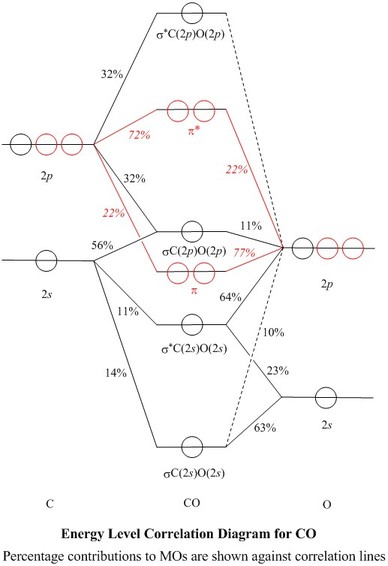In organometallic carbonyl complexes, a back-donation effect occurs: the σ molecular orbital of CO yields electron density to an orbital of the appropriate metal atom, and in turn, a d orbital of appropriate symmetry yields electron density to the antibonding π* orbitals of CO.
On the basis of this model, the properties of carbonyls (e.g., the vibrational energy of the C–O bond or its bond length) can be explained. For example, in the following table, I understand that all of the bond lengths are longer than in free CO, because of this backdonation which decreases the C–O bond order. However, how can the differences between the three metal complexes be explained?
| Species | C–O bond length (pm) |
|---|---|
| $\ce{CO}$ | 112.8 |
| $\ce{[Ti(CO)6]^2+}$ | 116.0 |
| $\ce{[Cr(CO)6]}$ | 114.0 |
| $\ce{[Ni(CO)4]}$ | 113.0 |

